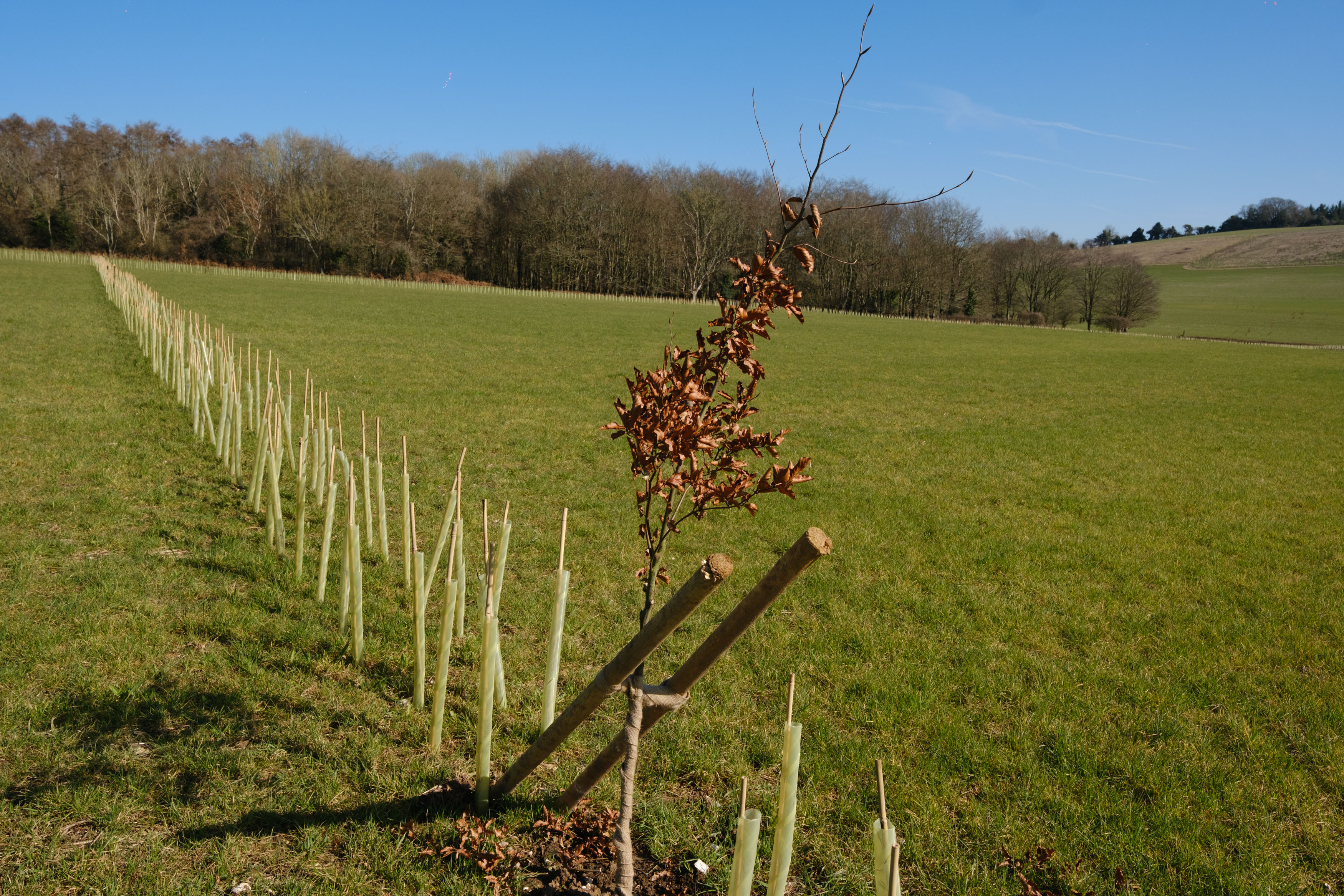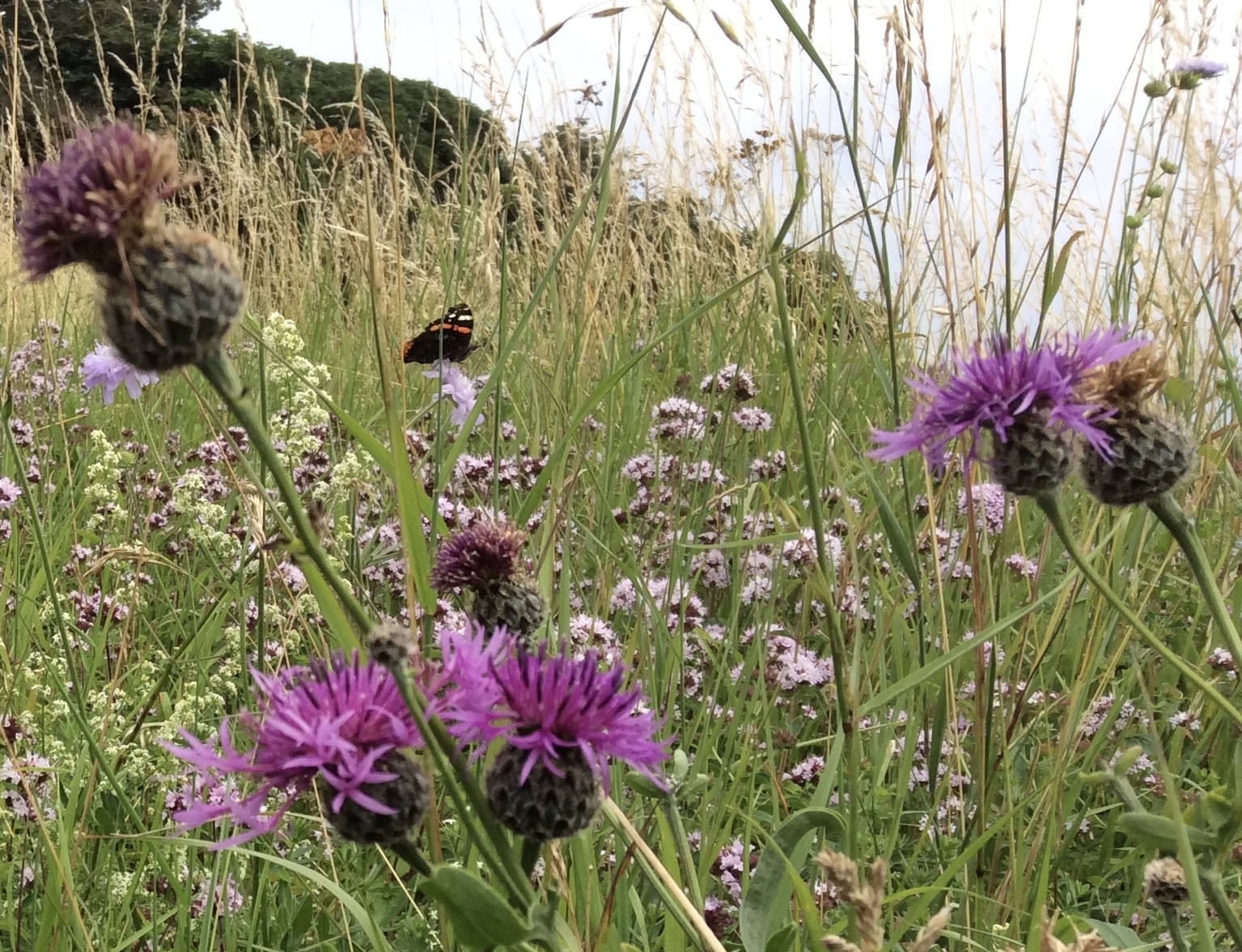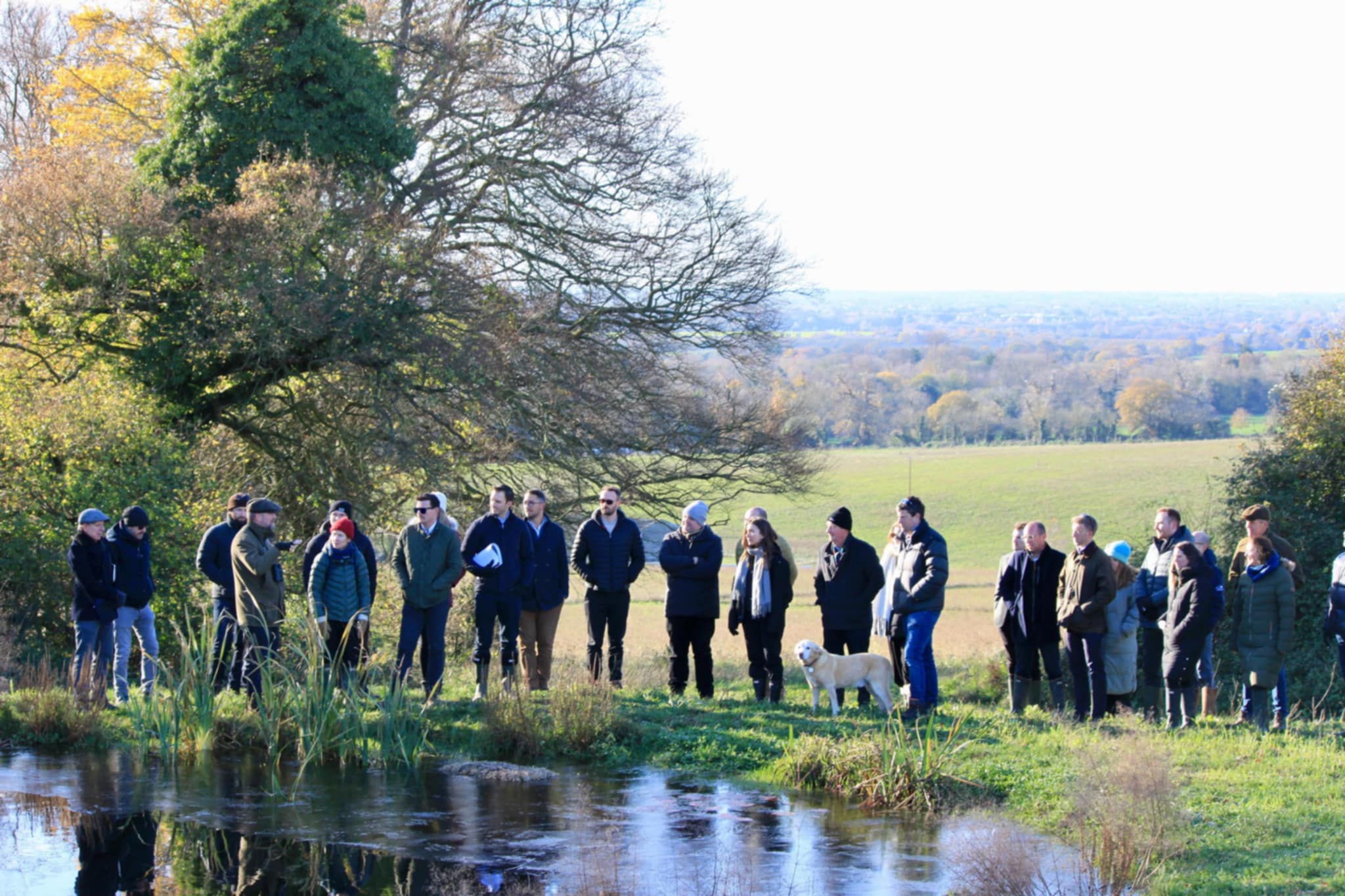From ancient settlement to a natural haven – the history and future of Halnaker Hill Farm
Every time we take in the stunning views over Halnaker Hill Farm, we’re struck by how fortunate we are to work with this beautiful gem of the South Downs. Signs of the land’s ancient history and its bright future are visible, from the ancient monument that overlooks our 330 acres to the hand-planted saplings now taking root in its chalky soil.
The farm’s purpose is to contribute to the biodiversity of the Downs, as work we are doing now to plant trees, hedgerows, reintroduce wildflowers and encourage the return of species comes to fruition.
However, to know where you’re going, it’s always good to know where you’ve been – so here’s a reminder of the fascinating history of Halnaker Hill Farm.
Early beginnings
The summit of Halnaker Hill, which looks over our farm is the site of an earthwork structure known as a ‘causewayed enclosure’. This is a Scheduled Ancient Monument dating back to Neolithic times, around 4000 to 3500BC.
Further down the slope, the remains of Stane Street, a Roman road connecting Chichester to London, still cut across the landscape. This was thought to be constructed during the first decade of Roman occupation, possibly between 43 and 53 AD, making it around 2,000 years old.
Medieval times
In the village, Halnaker House was built by the de Haye family, who founded Boxgrove Priory. It was substantially upgraded in the 16th century by Thomas West, Lord de la Warr, whose chantry can be seen in Boxgrove Priory.
What’s in a name?
The tiny village of Halnaker’s unusual name may have its origins in a description of it from the 17th century as a ‘half cultivated’ or ‘half naked’ strip of land.This is thought by some historians to have evolved to become Halnaker (pronounced Hanaker).
The origins of the mill
A mill on Halnaker Hill was noted as present in 1301 in the will of Robert de St John.
A later mill was built for the Duke of Richmond and the Goodwood Estate and was first recorded in 1540. This was made completely of wood, including the large sails which powered two millstones used for grinding wheat and grains.
The brick-built, Grade II listed mill we see today was built in the 1740s and was working right up until it was struck by lightning in 1905.
18th century
By now, Halnaker Hill Farm is thriving. A map by cartographers Yeakell & Gardener from 1795 indicates how the land used to be farmed before intensive strategies took over. This way of farming worked alongside nature and was more sustainable for the environment. It is this map that have inspired the farm today.
20th century
During the Second World War, bunkers placed near the windmill were used to monitor radio transmissions from aircraft travelling over the South Coast. Their remains can still be seen.
The land ownership transitioned from the Goodwood Estate to the Stride family and then to the Langmead family in the late 1950s. Initially a mixed farm with dairy, beef cattle, and arable crops, it had shifted to a focus on continuous wheat farming since the 1970s. The heavy the use of fertilisers and pesticides subsequently led to poor soil quality.
Until now…
The future
Inspired by the Yeakell & Gardener map of 1795, the Halnaker Hill Farm project aims to restore the varied mosaic of habitats that once defined this landscape, and replenish the soil. By planting 20,000 native trees by hand, creating 6km of hedgerows, restoring wildflower meadows and building new ponds, the project reintroduces historical land features to support wildlife and soil health.
In time, native Sussex cattle and sheep will return to graze the land, maintaining open habitats and contributing to the regenerative cycle.
As one of the largest single biodiversity banks in the UK (by number of units), it offers 856 units to help:
- Developers meet mandatory BNG requirements under the Environment Act 2021
- Corporates fulfil ESG goals through voluntary investment
- Individuals support rewilding and ecological recovery efforts
Registered with Natural England and protected under Section 106 with the South Downs National Park Authority, the site guarantees stewardship for at least 30 years. It includes medium and high-distinctiveness habitats such as calcareous grassland, hedgerows, scrub, ponds and woodland.
This effort aligns with national and local targets to renature 30% of the South Downs by 2030, taking Halnaker Hill Farm from ancient beginnings to a bright, sustainable future.
For enquiries about BNG units for sale, see here.
Related Posts




